The first bite: how kitkats changed the world
When I come back from Japan, I am never asked to bring back noodles or rice which are the staple food of Japan. But there is one food that is always mentioned! Those weird KitKats!
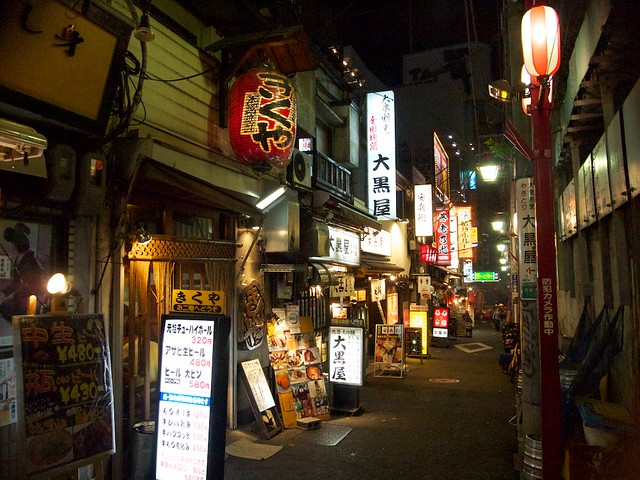
When I come back from Japan, I am never asked to bring back noodles or rice which are the staple food of Japan. But there is one food that is always mentioned! Those weird KitKats!

The first memory of eating something uniquely from Japan was one of these KitKats. To be more specific, it was the strawberry cheesecake flavour which came in a mount Fuji box. I remember opening the box with my brother and coming face to face with the smell of strawberry cheesecake! The first thought that went through my mind when I saw the mini bite sized treats were, do I eat them whole or do I break them in half and then eat a half one at a time? About 10 seconds later, my next thought was “wow, this actually tastes like strawberry cheesecake!”

And that is how I took my first step into the amazing world of Japanese food. A couple of months after that first taste, I had tried some of the other tastes of KitKats like plain strawberry, raspberry, and mint. So, the question is why are the Japanese so obsessed with KitKats? Well its name, KitKat! KitKat sounds very similar to a phrase of kitto katsu, which can roughly translate into "to certainly win.”. So, to put it in other terms, KitKats are lucky charms. They are commonly given to students as a good luck in exams, and the Japanese embrace this idea quite a bit as the boxes and wrappers that these KitKats come in, sometimes have spaces for people to write messages on.
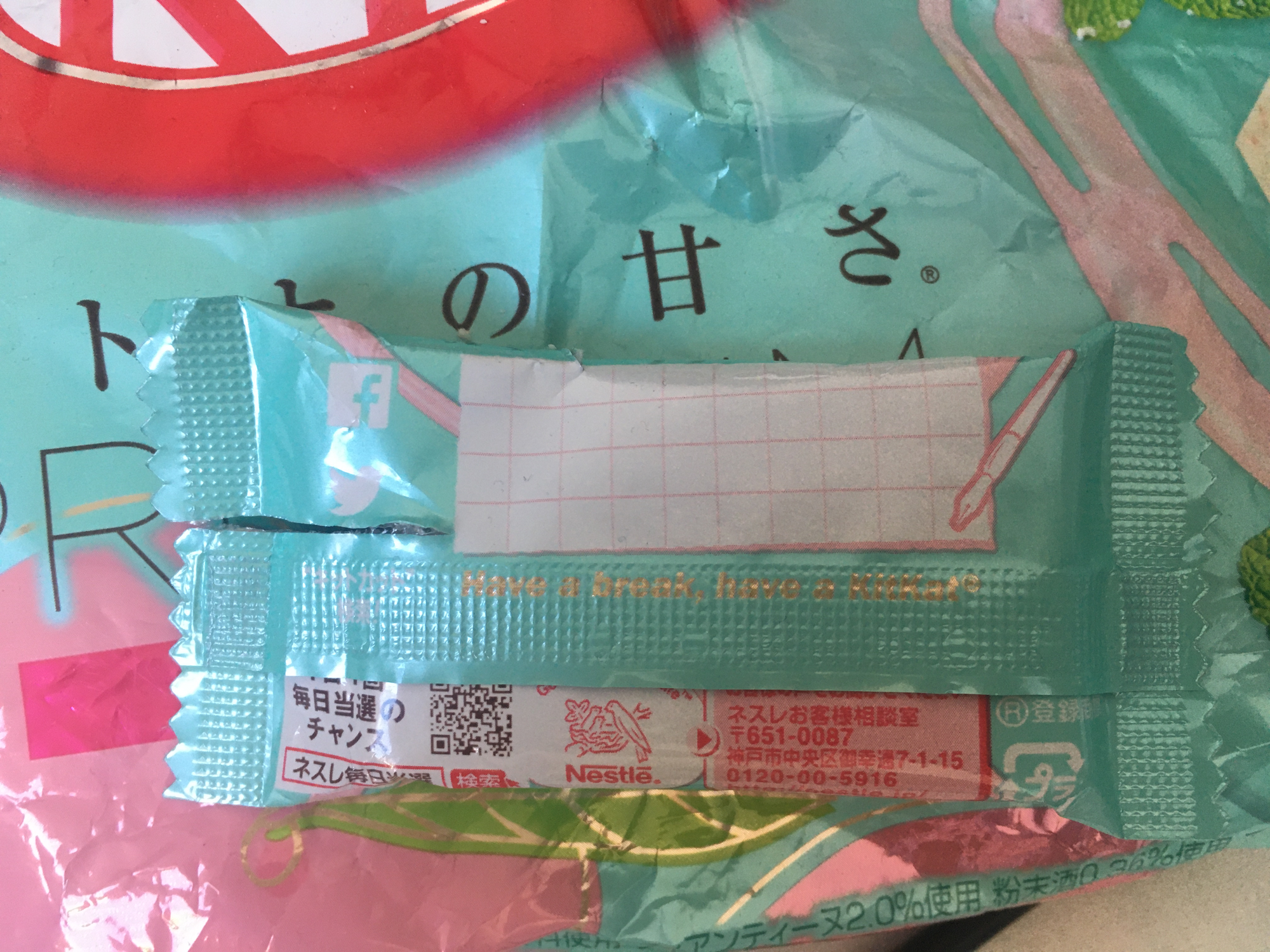
Now I could go on and on about KitKats and their amazing and crazy flavours, but I think I will save that for another blog post so let’s move on to the next chapter of this story.
Gummi:
When it comes to bringing things back from Japan, apart from a couple of boxes of KitKats, I always bring back one other kind of snack! Gummi! I enjoy offering the “crazy and weird” sweets to friends as there is about 3 out of 10 chance that the friend will take me up on the offer, and will pop the gummi into their mouth before nodding their head and saying “that’s actually nice”. Sometimes I do get the “I don’t like it” or “that has an odd texture” but oh well, at least they tried something new. But what about the 7 out of 10 chance that they will not take up the offer, well I enjoy that too because it means more gummi to me and I normally get an odd look from the individual. But it is a shame as they do not get to experience something new.
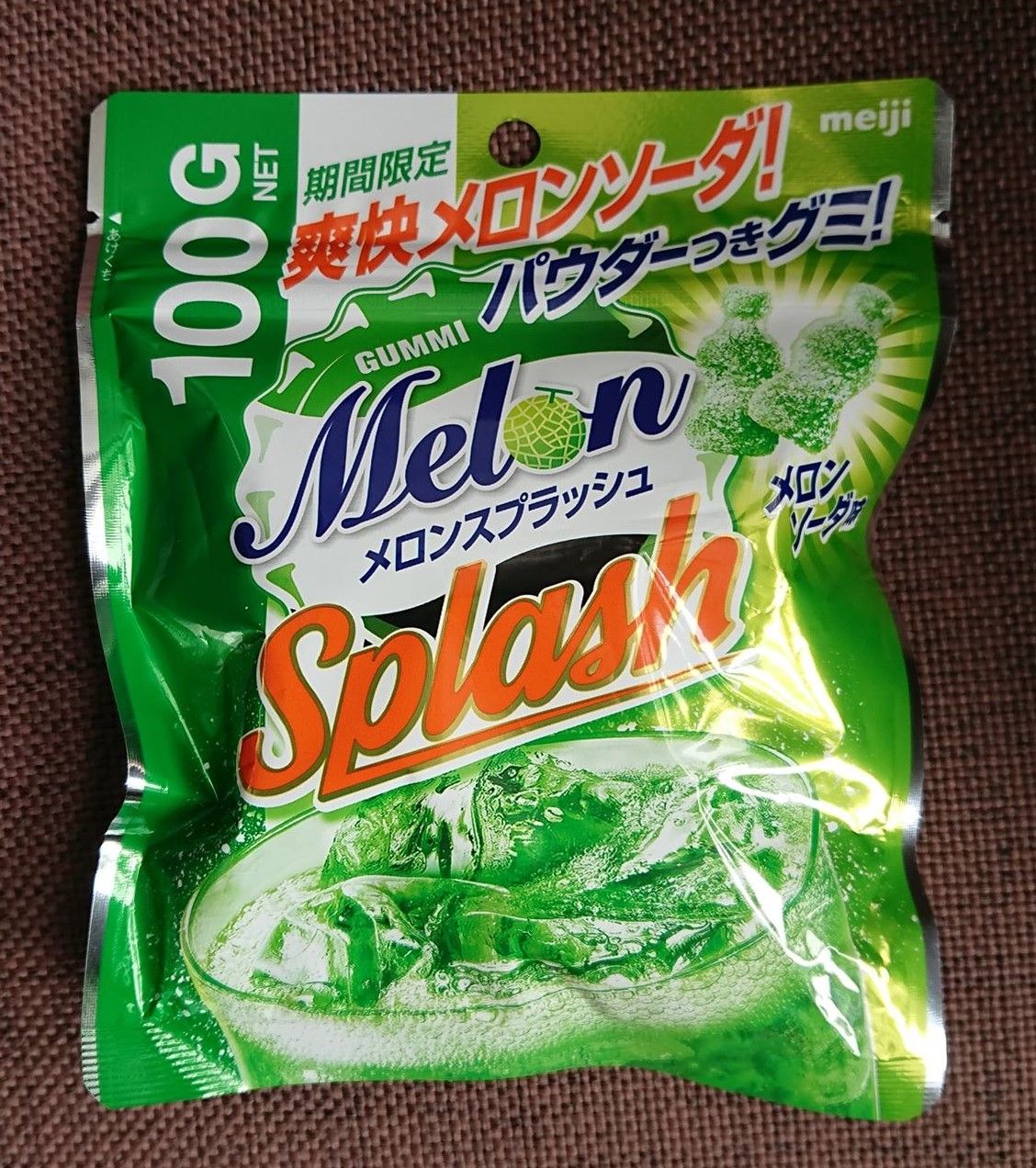
Now there is one thing that anyone who has tasted a couple of Japanese KitKats and gummi will agree with is, apart from a mild artificial taste, the snacks actually taste like what they say they taste like. Want to taste sake without drinking it? Have a sake flavoured KitKat. Want to try the combination of mint and peaches? Well just say, I have a bag of peach mint KitKats that I am snacking on right now. I would go as far as to say, this is a prime example of the Japanese way of cooking as I mentioned in the last blog, they have attempted to make the prefect tastes of their snacks and most of the time, it has worked out.
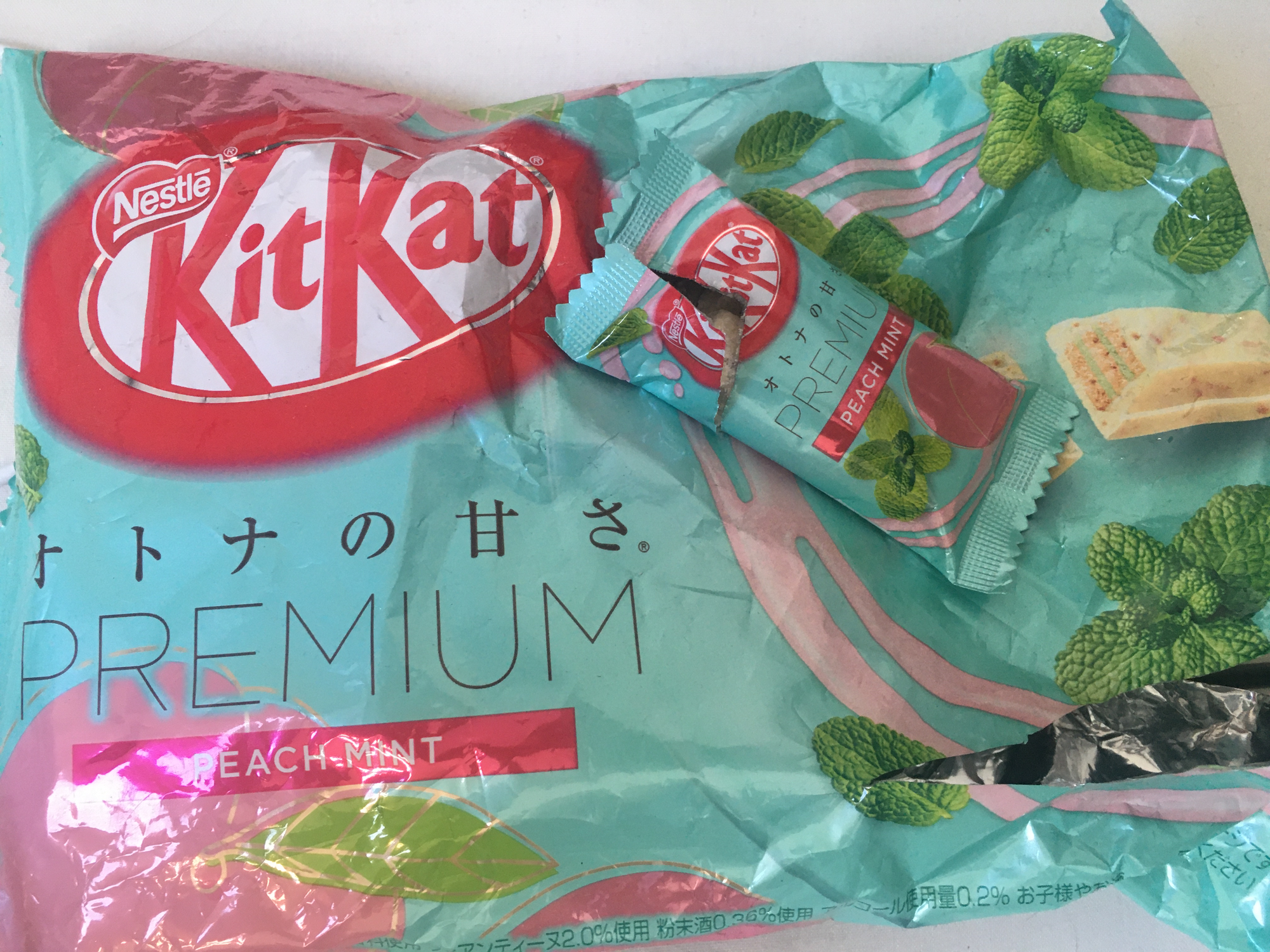
Airplane food:
By the summer of 2017, I had tasted a select but enjoyable range of KitKats, gummi, sake, beer from Japan but I had not had any authentic Japanese dishes like ramen. But by chance, this was the summer that I found out that I would be going to Japan later that year. Now before we get the dishes that I fell in love with on my first trip, let’s start at the very beginning and I am not talking about my first ever step in Japan, I am talking about the flight. Every flight that I have ever taken from the UK to Japan has been with British airways and they have a fun way to welcome their Japanese passengers back home and to introduce any foreigners to Japan by serving a Japanese dish at lunch or dinner. It is a great idea, but this is where I hit my first hurdle of my Japanese food journey, sesame! For anyone who doesn’t know me personally, I have allergies and one of the main one is sesame seeds so with the Japanese loving the use of sesame as an oil and ingredient in their cuisine, it is a quite big issue for me. And this has lead to me, never eating any of the Japanese meals that BA serve although it also has led to me having some interesting meals being prepared for me including food from first class but that’s another story for another time.
Ramen:
So, what was the first ever Japanese dish that I had? Ramen! No surprise there to be fair, but I do remember the first time, I went for it. I had just finished moving my bags into the apartment and walking down the back streets of where I live in Tokyo. At the time, I was still out of it as I was soaking in the new smells, sights and sounds of what I would call home now. The restaurant, I went to was the local on the high street ramen place which has led to a tradition for me where the first meal I have whenever I land in Japan is a bowl of ramen and a plate or two of gyozas before heading next door to Sega world to have a go at some of the machines.

So, what kind of ramen is there?
· Shio (salt broth-based) Ramen: it has a light flavour to it. The broth is normally transparent and made from chicken bones and seafood like dashi stock.
· Shoyu (Soy Sauce) Ramen: it has a rich flavour to it. The broth has a bit of colour to it, made from chicken bones and seafood like how Shio Ramen broth is made but other ingredients like pork bones are sometimes added.
· Miso Ramen: Can have a varied flavour to it depends on what kind of miso is used as the base (charred miso, white miso, red miso, soybean miso, barley miso, and rice miso). And therefore, the colour of the broth can be varied too but usually is a light brownish orange that miso soups are known to have.
· Tonkotsu (Pork Broth) Ramen: it can be light and smooth, or thick and rich. But a noticeable thing is the noodles in Tonkotsu ramen are usually very thin.
With there being so many kinds of ramen, there is lots of regional varieties of ramen like Kitakata Ramen from Fukushima Prefecture, which is known as one of Japan’s three great regional ramen recipes. It is also one of the popular kind of ramen seen in anime. It has a light shoyu soup typically flavoured with pork bones, chicken stock and dried sardines, and are filled with wide, flat noodles that are chewy and wavy. Kitakata Ramen are usually topped with green onions, menma (Seasoned Bamboo Shoots), and chashu (Japanese Braised Pork Belly). But not all ramens follow a traditional path, for example Blue Ramen which is a dish I am yet to try so maybe I have to do a Ramen review blog.

Now during the first time I had ramen, it was also the first time, I came across the ticket machines that I have found all over Tokyo, a lot of restaurants will have a vending machine like system at the front or just outside of the restaurant where you order your food. These machines are in place to counter rush hour and most popular with restaurants that produce quick meals like ramen and rice bowls. But in other cases, some restaurants will take your order directly with pen and paper like the next thing I experienced.
Okonomiyaki:
When someone asks me where my favourite restaurant is in japan, I answer with “well my favourite restaurant in world would be a small family run Okonomiyaki restaurant in Iidabashi. Then I get told that there are better places in Tokyo, but this small restaurant is one of the first stops on my food journey. The first thing you notice when you walk in is a L shaped grill (teppan) that encloses the chefs from the customers. Whenever I have walked in, the chef has gestured for me to take a seat right in front of the teppan so I can watch them cook the food. Now this is a great experience for anyone because it’s like watching an artist paint a picture but for me is more than just a show, it’s a chance to learn something new as I love cooking to the point where I have three Japanese knifes that are a joy to use. Now let’s get onto the food! Okonomiyaki, its name can be derived into “how you like” and “cooked” which makes sense when you order it.
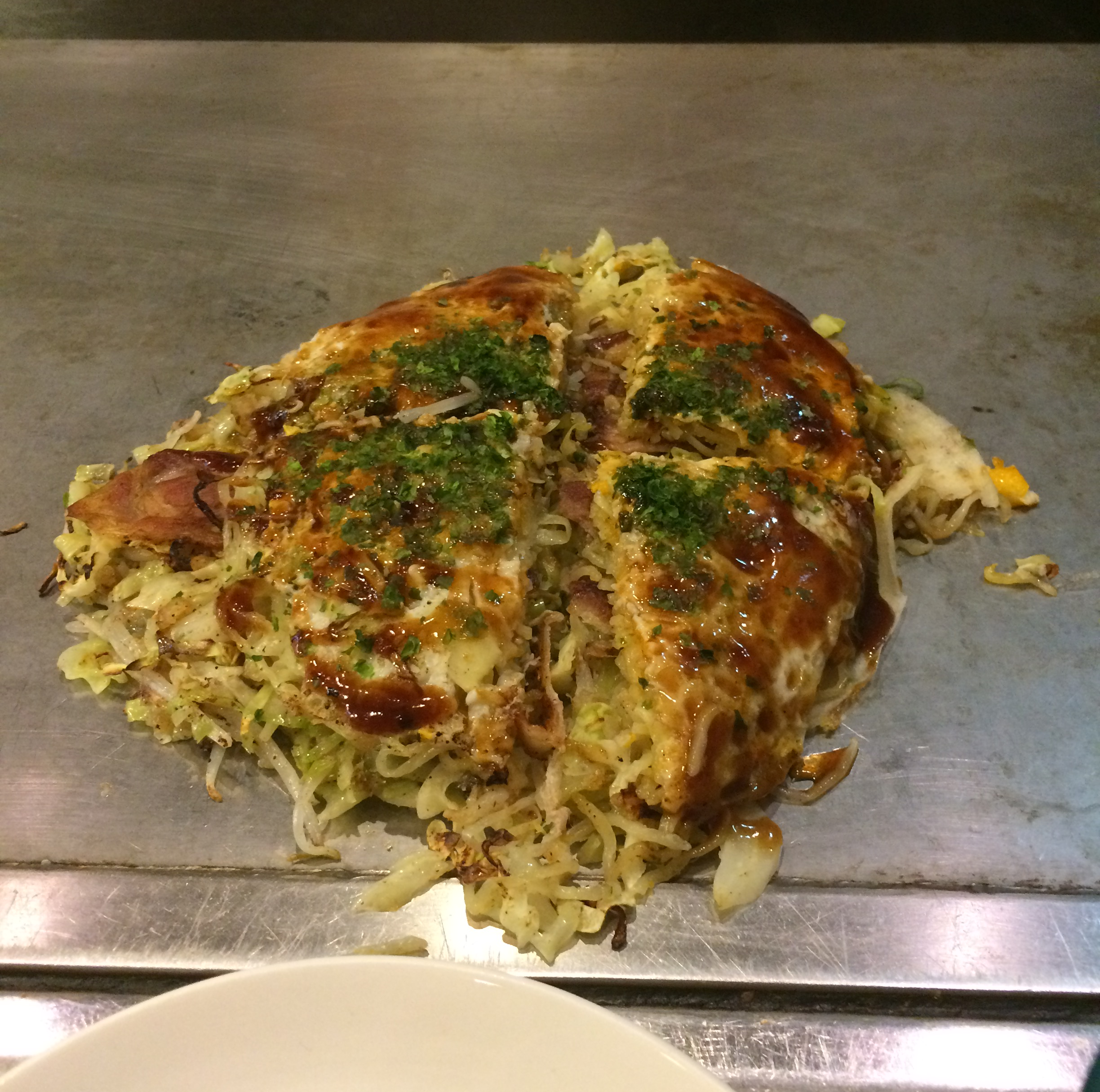
Nearly anything can be put in the batter and therefore it is quite adaptable for most food diets. By chance in my pancakes conference talk, I gave a recipe of how to make one (I might share the recipe in a “recipes” blog)! Now if anyone is struggling to say okonomiyaki like I did for a while, then you can call it by its nicknames: “Japanese savoury pancake” or “Japanese pizza” or my version which is noodle pancake! It is commonly made with flour, eggs, tempura scraps, cabbage, and pork belly slices and topped with a variety of condiments like okonomiyaki sauce, Japanese mayonnaise, dried seaweed, and dried bonito flakes. Now the one thing I find with ramen and okonomiyaki is that after eating them, I just want to eat even more so this is where sides come in!
Gyoza:
What could be better than a bowl of chips? Well gyozas, you might have seen Japanese people in shows, restaurants and anime, dipping an orange slice shaped dumpling into soy sauce and then bite it to reveal grounded meat and vegetables within the thin layer of dough of the gyoza. They are also known as pot stickers, as they originated in China where they are known as jiaozi). The normal gyoza filling consists of ground pork, nira chives, green onion, cabbage, ginger, garlic, soy sauce and sesame oil. But lucky for me, most restaurants have a range of gyozas with different fillings so I can dodge the ones made with sesame oil. The kind of gyoza that you will probably come across is Yaki Gyoza which are pan fried in a hot skillet before they are covered by a mixture of water and corn starch. The goal of covering them with this mixture to steam the gyoza, which makes them soft and juicy while also creating a thin crispy bottom on each gyoza. The other kinds of gyozas are: Hanetsuki gyoza ("gyoza with wings"), Sui Gyoza (boiled), Age Gyoza (deep fried). A great thing about gyozas are they do not cost much to get 6 of them, the average costs is about 400 yen which is about £2.93 or €3.23 so a prefect snack!
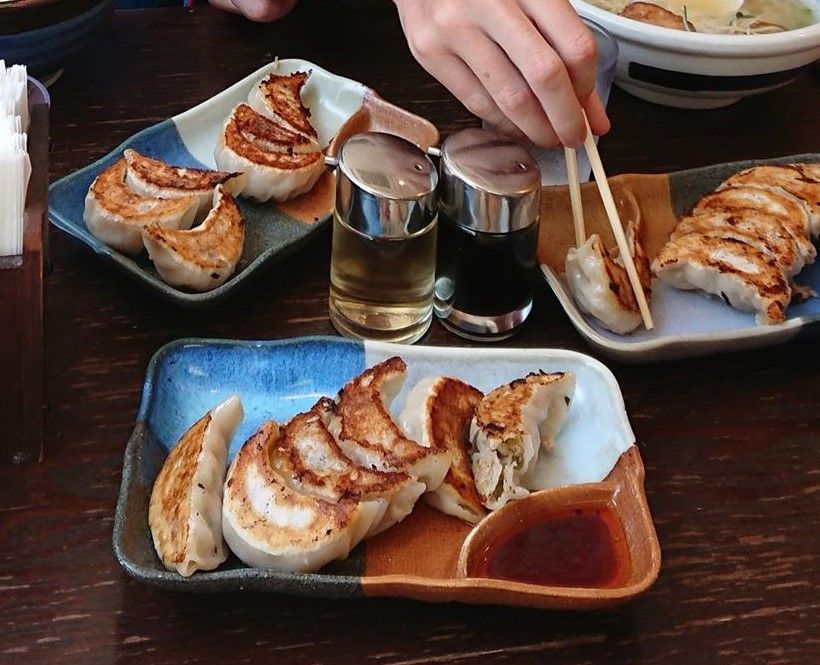
Pork cutlets:
During my first trip, I did eat a lot of meals at the apartment as we were still touch and go with what I could eat so I didn’t eat as much Japanese food as you would think. But there is one more dish, that I remember eating which was pork cutlets or Tonkatsu. It is normally seen as a dish that consists of a breaded, deep-fried pork cutlet served with shredded cabbage and on a bed of rice. It is mainly served with a type of thick brown sauce called tonkatsu sauce and sometimes with a slice of lemon as well. But the main thing about Tonkatsu is it can be served in so many ways, with rice, miso soup and tsukemono (preserved vegetables), grated daikon or as a sandwich filling or in a curry.
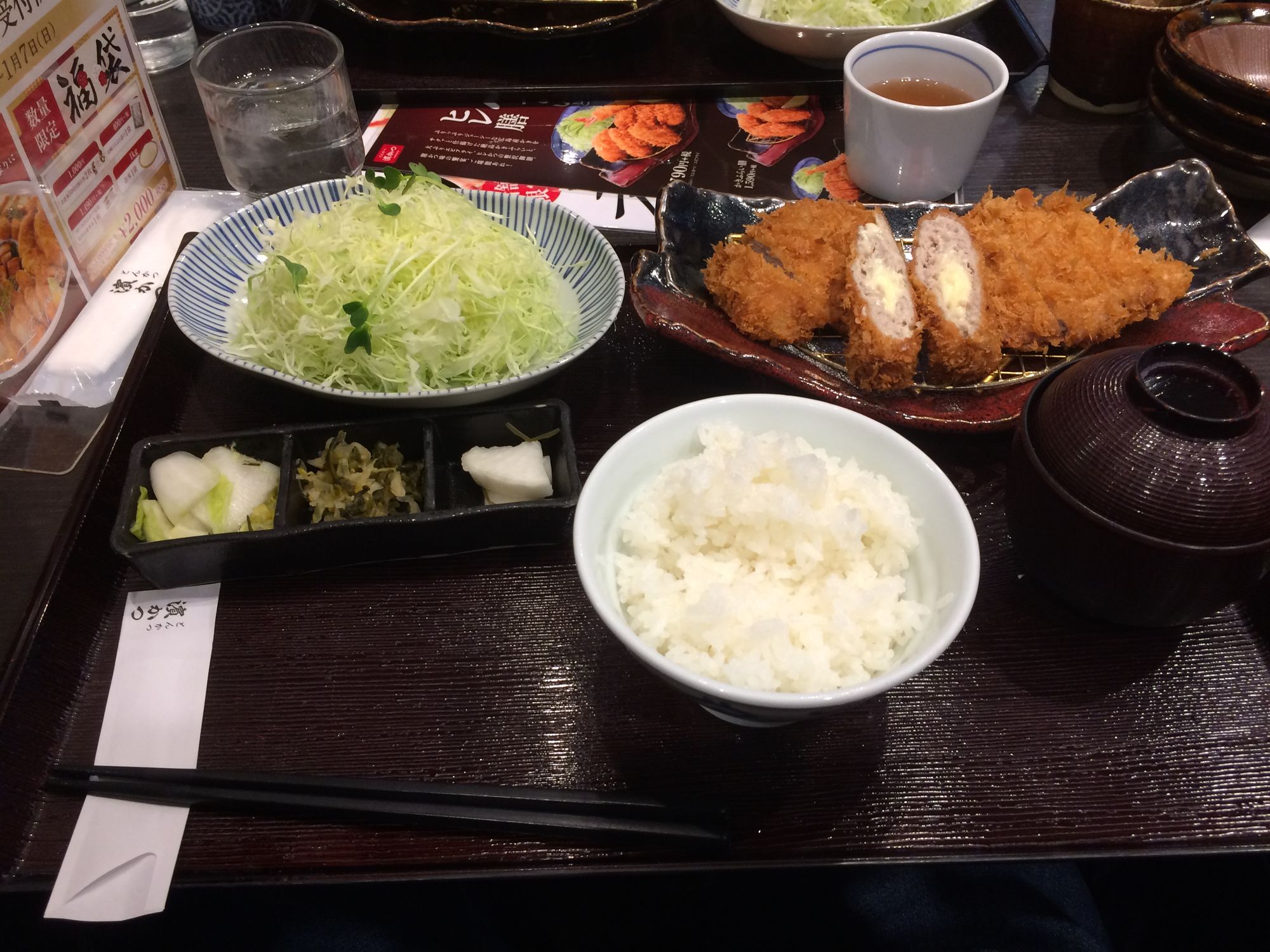
The first time I had it, it was served with shredded cabbage and rice. But now I commonly have it in a sandwich with a salted rice ball as my lunch for work or as katsudon at a local restaurant which is Tonkatsu served with egg on a big bowl of rice.
Conclusion:
This is when someone goes, “where is the sushi?” Well truth to be told, I never had sushi in my life. The simple reason is my allergies and that sushi was originally “peasant” food, but the west has made it into something that is an expensive treat. But maybe I go and try some when I am out in Japan for the experience and for a blog post.

This is another blanket blog as it has just covered multiple topics in just one post, but it does now open the possibilities of doing more detailed blogs on each dish/food that I mentioned during this post. I just want to say a big thank you to everyone reading and to everyone who voted on my poll from next week but I say a specific big thank you to my friend Bee, for persuading me to do a whole series on just food! In terms of next week, it will be on Japanese numbers, looking at how to remember them and how I learned them. I plan to cover the key numbers like 1000 as well as they are needed in day to day life in Japan. So, until next week, arigatou gozaimasu and sayōnara!
